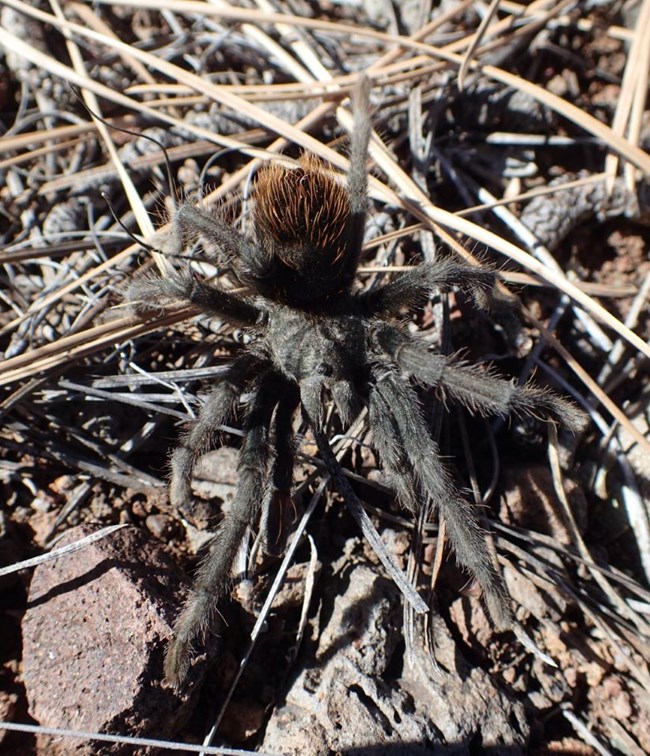Last updated: November 21, 2022
Article
Grand Canyon Black Tarantula

Photo courtesy of Chris Hamilton
Scientific Name
Aphonopelma marxi
Identification
- Tarantulas grow to a large size- Grand Canyon black tarantulas grow up to 4 inches (10cm) from leg tip to leg tip. The goliath bird-eating spider (Theraphosa blondi) is the world's largest species of tarantula. Found in South America, it can reach up to 11 inches (28cm) from leg tip to leg tip.
- Tarantula burrows are silk-lined holes in the ground. Tarantulas use silk as a frame to prevent the burrow from collapsing.
- All tarantulas are covered in thick hair. Grand Canyon black tarantulas are dark in color, and the hair on the abdomen is reddish or orange in color.
Habitat
- Tarantulas live are found throughout the Grand Canyon. Tarantulas inside the Canyon tend to grow slightly larger than tarantulas on the Rim.
- They spend most of their lives in underground burrows.
Behavior
- During most of the year, both males and females spend most of the time in their burrow, only moving short distances at night to hunt.
- Most sightings are during the autumn months, when males leave their burrows and wander constantly looking for a mate.
- Tarantulas will not bite unless they feel very threatened, and the pain of a tarantula bite is comparable to a wasp sting. The main defense for North and South American tarantulas are urticating, or barbed, hairs. When threatened, a tarantula will brush these barbed hairs from their body into the air, where they lodge in the eyes, nose, and mouth of attackers, causing extreme irritation.
- Tarantulas prey on everything from insects to small rodents. After a large meal, a tarantula may not feed again for months.
- Tarantulas are the prey of some birds, lizards, and giant centipedes. The most famous creature that preys on tarantulas is the tarantula hawk.
More Information
- Tarantulas are not dangerous, but their bite is painful. While these spiders are large, they can be easily harmed if dropped or stepped on. Please observe these incredible arachnids from a distance.
